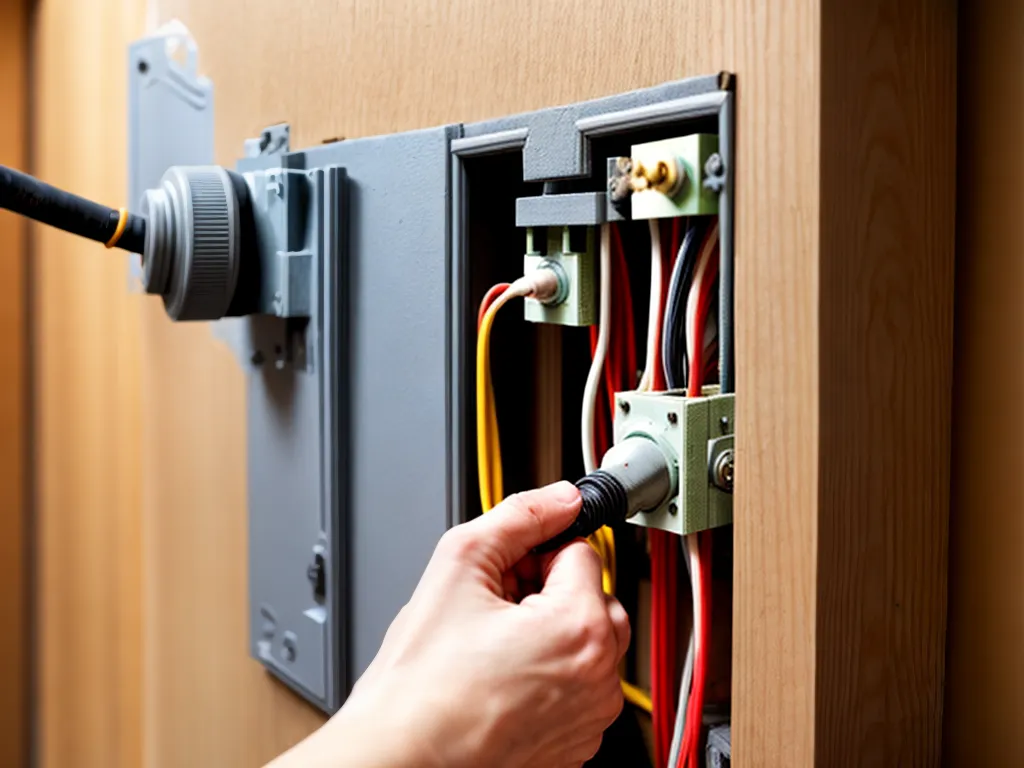
What is Knob and Tube Wiring?
Knob and tube (K&T) wiring was an early standardized method of electrical wiring used in buildings in Canada and the United States from about 1880 to the 1940s. It consisted of single insulated copper conductors run within wall or ceiling cavities, passing through joist and stud drill-holes via protective porcelain insulating tubes, and supported along their length on nylon knobs attached to the structural framing.
While K&T wiring provided an improvement in safety over previous exposed wiring methods, it has a number of drawbacks compared to modern electrical wiring:
- The wiring lacks a ground conductor, increasing the risk of electrical shock.
- Overheating can occur due to undersized conductors and lack of insulation between hot and neutral wires.
- Cloth insulation degrades over time, increasing the chance of short circuits and fire.
- Difficulty accessing wiring within walls makes maintenance and repairs challenging.
These safety concerns mean K&T wiring often needs to be replaced in heritage homes, but this can be challenging due to the invasive nature of retrofitting modern wiring in old buildings. Careful planning is required.
Why Retrofit K&T Wiring in Heritage Homes?
There are several compelling reasons to consider retrofitting K&T wiring in heritage buildings:
- Fire safety: Degraded K&T wiring is a known fire hazard. Replacing it reduces risk.
- Electrical safety: Lack of grounding and proximity of conductors creates shock risks.
- Insurance: Some insurers may not offer coverage for homes with K&T wiring.
- Improved electrical capacity: Allows installation of modern appliances and electronics.
- Resale value: Upgraded wiring makes a heritage home more attractive to buyers.
At the same time, heritage regulations often tightly control the extent to which historical buildings can be modified. Sensitive retrofitting of wiring maintains heritage character while improving safety.
Planning a K&T Wiring Retrofit in a Heritage Home
Careful planning ensures a successful K&T wiring replacement project in a heritage building:
Research Building Plans and Permits
- Review architectural drawings to understand wiring routes.
- Check municipal permits to learn about past electrical upgrades.
Develop a Retrofit Plan
- Work with a qualified electrician experienced in heritage buildings.
- Minimize impact on heritage fabric like walls and ceilings.
- Plan accessible routes for new wiring through walls, attics, and basements.
- Select suitable low-smoke, fire-retardant wiring if original insulation must stay.
Consult Heritage Approval Authorities
- Research which heritage regulations apply to the building.
- Submit a heritage permit application with proposed retrofit details.
- Be prepared to modify plans to satisfy heritage requirements.
Secure Electrical Permits
- Submit a permit application to the relevant electrical authority.
- Ensure the proposed work meets all electrical and building codes.
Safe Techniques for Installing New Wiring in Heritage Buildings
Once necessary permits and approvals are in place, K&T wiring replacement work can begin. Some safe installation techniques include:
Prioritize Removal of Risky Branch Circuits
- First replace K&T wiring for kitchens, bathrooms and other high-risk rooms.
- Remove the most deteriorated, damaged K&T wiring first.
Retain Original Decorative Switch Plates and Outlets
- Reuse original fixtures where possible to preserve heritage character.
- Wrap new wires behind vintage switch plates.
Fish Wires Through Finished Walls
- Use long flexible drill bits to create new wiring paths within walls.
- Use flexible fiberglass fish tape to pull wires through.
- Limit damage to existing walls, woodwork, and finishes.
Run Wires Through Attics, Basements and Crawlspaces
- Access unfinished hidden spaces to route new wiring.
- Avoid surface-mounted conduits on finished walls.
Repair Walls and Ceilings with In-Kind Materials
- Use identical lath and plaster, wood panels, or materials when repairing drill holes.
- Match original patterns like beaded ceilings to preserve character.
Summary
While rewiring old heritage buildings with modern electrical wiring requires care and expertise, it can be done safely. Following heritage regulations, using less-invasive wiring techniques, and repairing surfaces appropriately retains the heritage character while eliminating the considerable risks of deteriorated knob and tube wiring. With careful planning and the right tradespeople, heritage homes can provide safe, comfortable living for years to come.